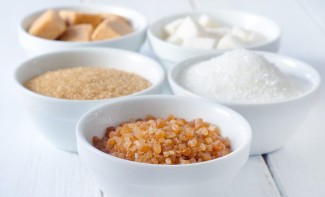
Most people consume more sugar than they realize. The obvious sources of added sugar are candy, cookies, and pastries as well as sugar-sweetened beverages like juice, soda, and sports drinks. Added sugar also lurks in seemingly innocent foods like peanut butter, bread, marinara sauce, and salad dressing. It’s no wonder people are consuming more sugar than they think!
Added sugars are sugars or syrups that are added to foods during processing. They're different than the naturally occurring sugars that are found in fruits and dairy products like plain yogurt and milk. Consuming too much added sugar can put you at risk for obesity, heart disease, diabetes, and other inflammatory conditions.
Sugar doesn’t provide any beneficial nutrients to your diet but contributes additional calories that can lead to weight gain. The American Heart Association recommends no more than 36 grams of added sugar for men and 25 grams or less for women per day.
Measure It - If you could visualize how much sugar is in that sugar-sweetened beverage you might think twice before drinking it. It's hard to interpret the grams of sugar that we see on the Nutrition Facts label. Teaspoons are an easier measurement for most of us to understand. To calculate how many teaspoons of sugar are actually in foods and drinks, simply divide the grams of sugar on the label by 4. For example, if a soda has 40 grams of sugar listed on the Nutrition Facts label then you are consuming around 10 teaspoons of sugar!
Spice It Up - When you decrease added sugar in your diet you can add spices to create new and exciting flavors. Cinnamon and other spices like nutmeg add flavor and bring out the natural sweetness of the foods you are eating. Try adding cinnamon to your oatmeal instead of sugar, or even add a little cinnamon to your coffee when you brew it. Adjusting your taste buds to like new flavors takes a little time but eventually you'll realize there is a wonderful world of flavor to experiment with.
A Spoonful of Sugar - Most baked goods don’t need the full amount of sugar listed on the recipe. You can start by decreasing the sugar in your favorite recipes by 10% (remove 5 teaspoons from every cup of sugar) and then cut out a a little more sugar the next time until you find your “sweet” spot.

Cravings Cure - Can’t shake the urge to have a treat after dinner? Try eating fresh fruit to tame your cravings. Fruit contains naturally-occurring sugar which makes it the perfect sweet treat. Fruit also contains amazing vitamins, minerals, fiber, and anti-oxidants. Papaya with a little squeeze of lime juice or a handful of berries is really refreshing and satisfying. You can freeze grapes for a cold treat or make a creamy banana “nice” cream.
Healthy Hydration - Sugar-sweetened beverages such as soda, juice drinks, and sports drinks are major sources of added sugar. Take small steps to decrease the amount of sugar-sweetened beverages you drink every day by replacing sugar-sweetened beverages with water or herbal tea.

Reducing added sugar in your diet is a sweet habit to establish. Added sugar can contribute to obesity and many chronic diseases. Work towards developing your own unique healthy eating habits by reducing the amount of added sugar in your diet with small and sustainable changes. Those small steps can lead to a healthier and happier you!